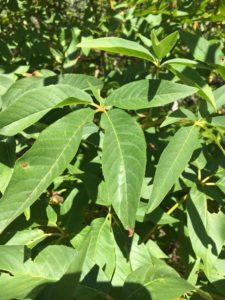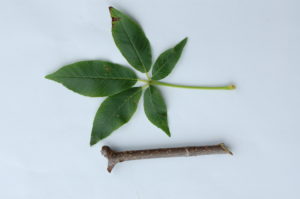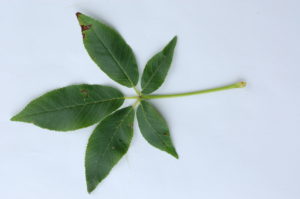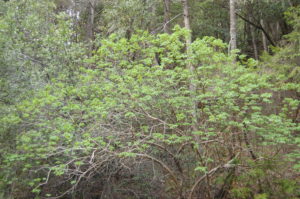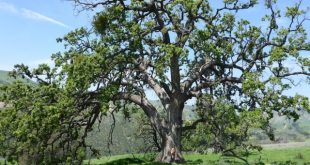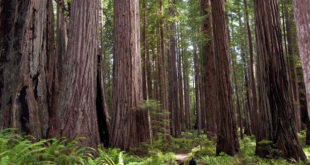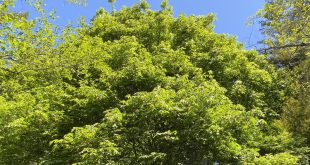Family SAPINDACEAE
Life Cycle
In the merry month of May the California Buckeye puts on its most magnificent display with candle-like white spires of flowers that fill the air with fragrance and make the trees impossible to miss even when they are tucked away in creek drainages and canyons and the edge of chaparral—their preferred habitats. [Photo: 1].
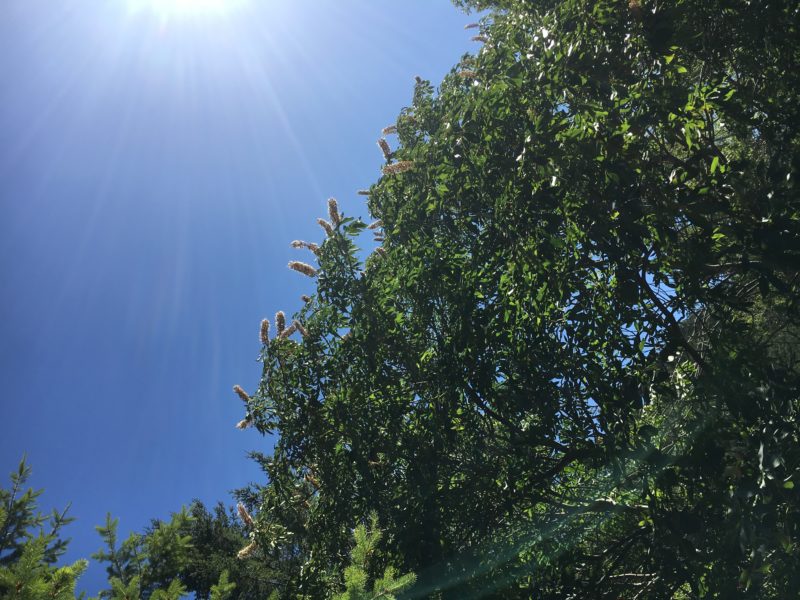
Like the big leaf maple, a fellow member of the Soapberry family, the buckeye begins its yearly life cycle by producing large palmate leaves that emerge in spring from the smooth gray branches, covering the tree in a soft light green. [Photos: 2, 3, 4,5, 6, 7 ]
Soon after, the developing panicles of flowers can be seen peeking out of the foliage. [Photo: 8]. Within a month or so, the individual pink and white flowers begin opening from the bottom up with long orange-tipped stamens curving out of them. [Photos: 9, 10]
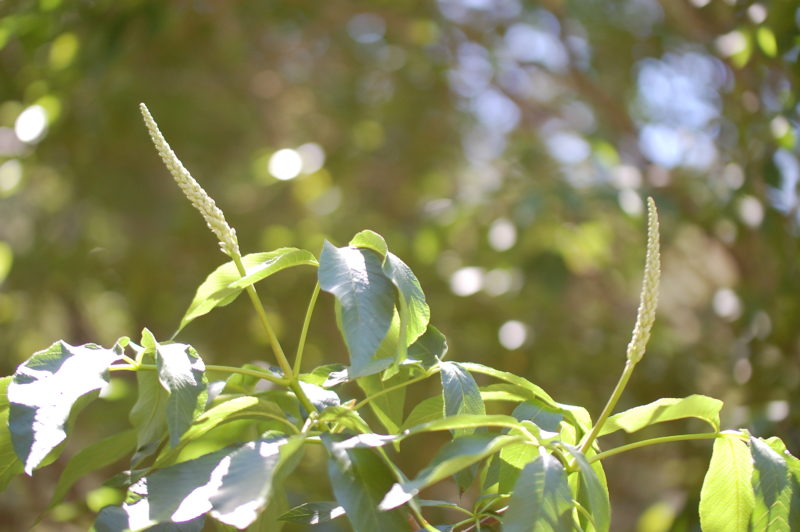
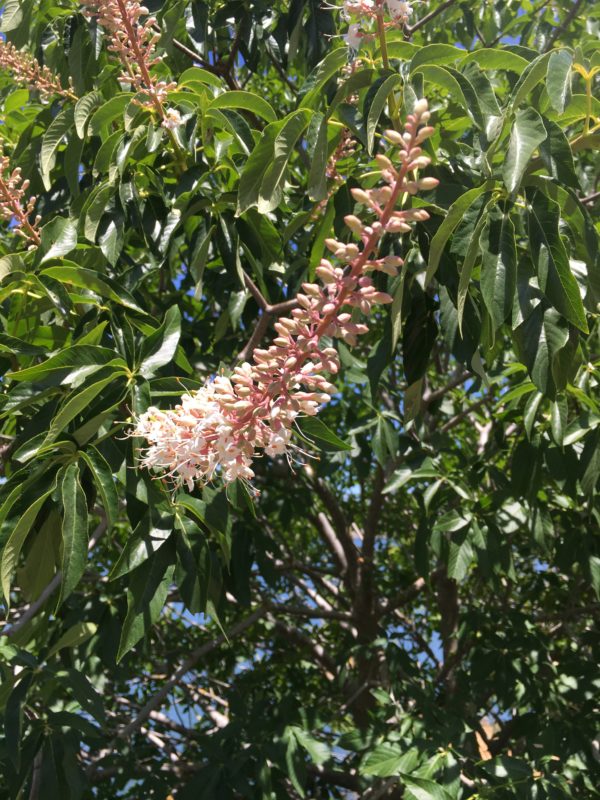
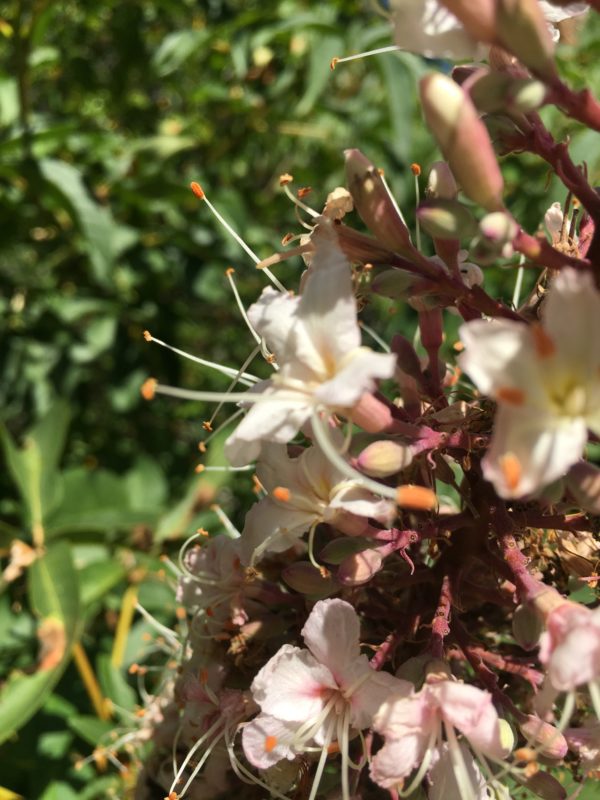
The lower flowers tend to be female and will develop the few fruits that eventually become the buckeyes. When mature, the panicles often reach a whopping 8 inches in length. [Photo: 11]. Flowers wither in the order in which they develop, from the bottom up. [Photo: 12]
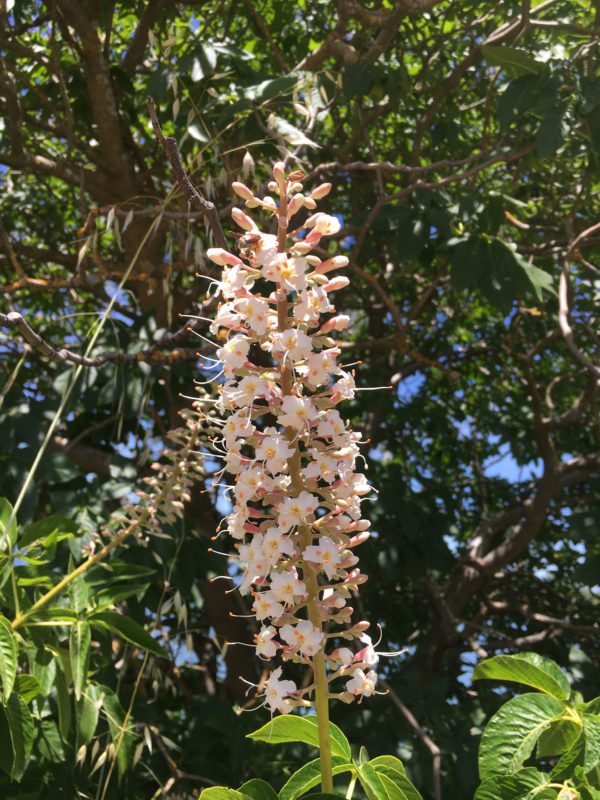
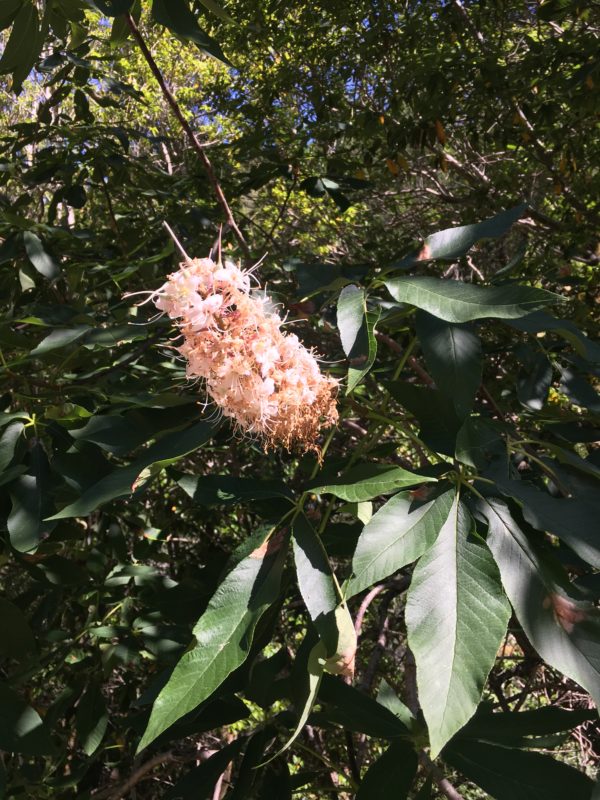
When summer’s seasonal drought reaches its peak, the leaves turn brown, wither and drop—an adaptation to conserve water— unveiling the green felt-like husks or capsules containing the buckeyes. [Photos: 13,14]
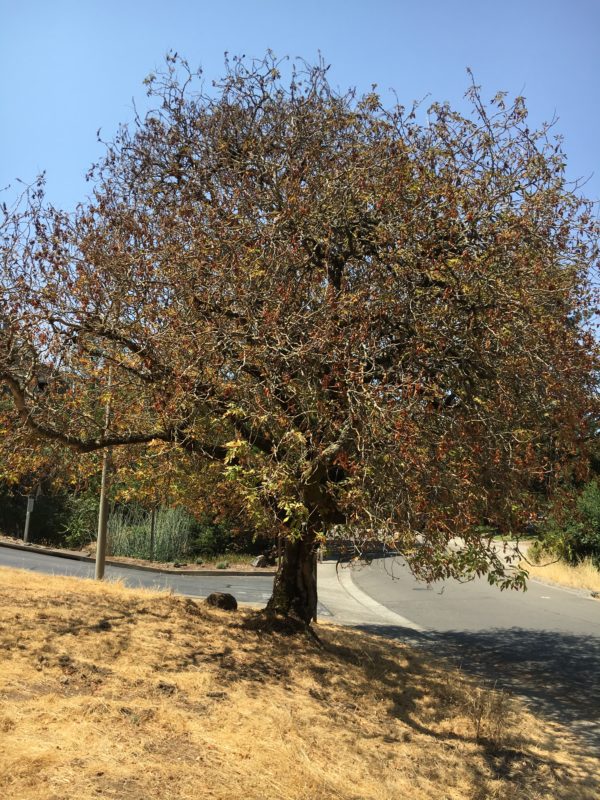
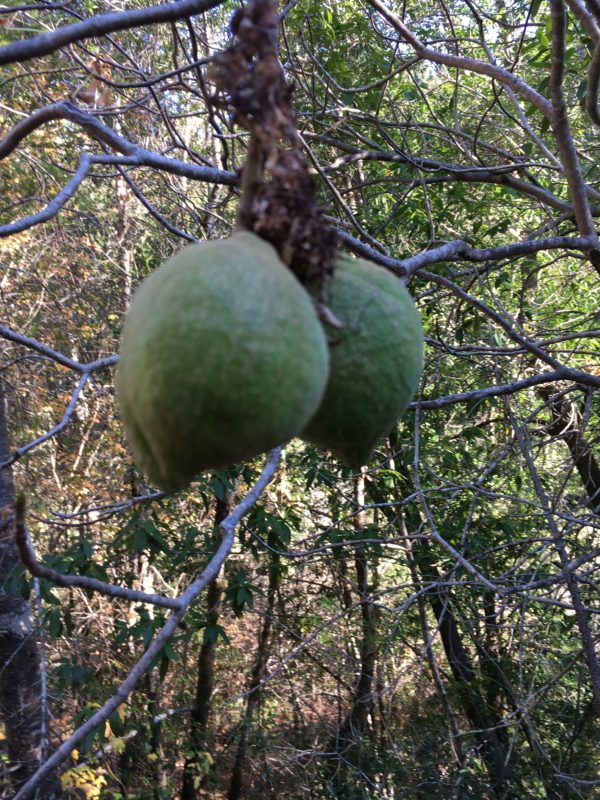
The capsules ripen in the fall and turn golden brown. [Photos: 15,16] By early winter they have split open and dropped the glossy brown buckeyes, each a large single seed. [Photo: 17]
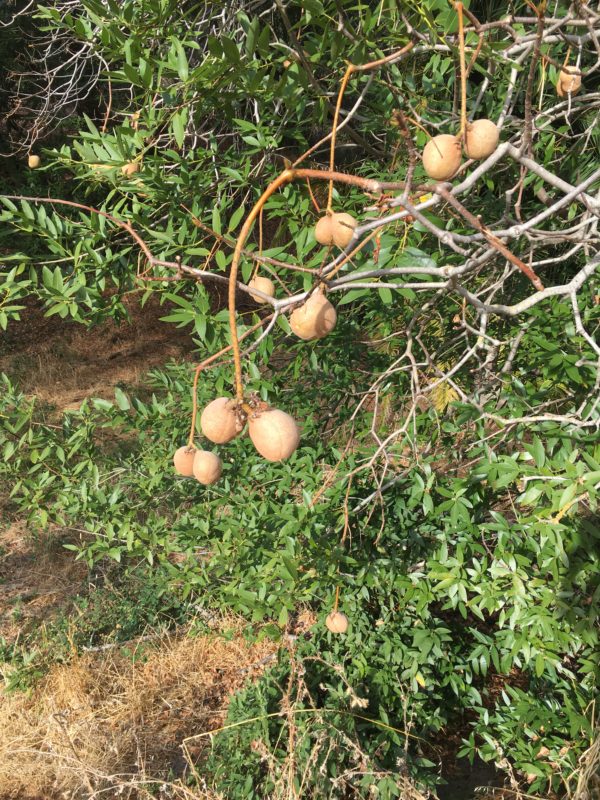
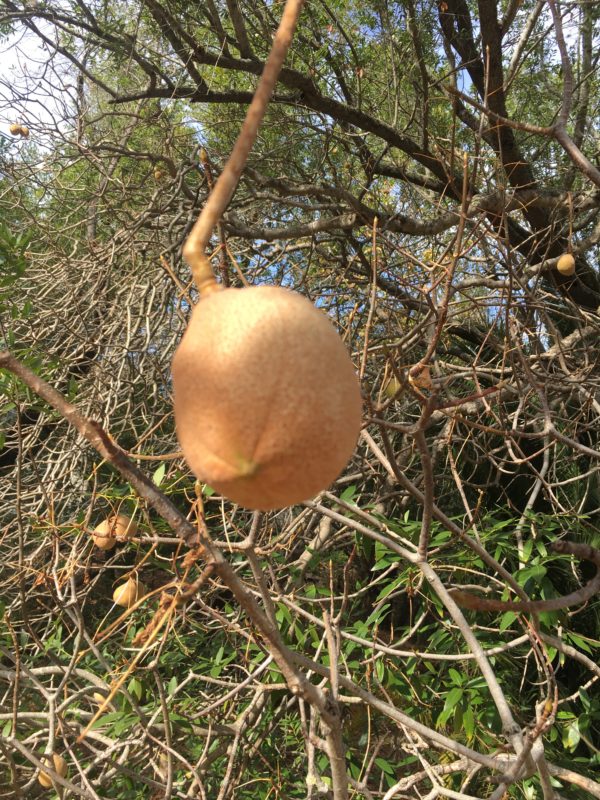
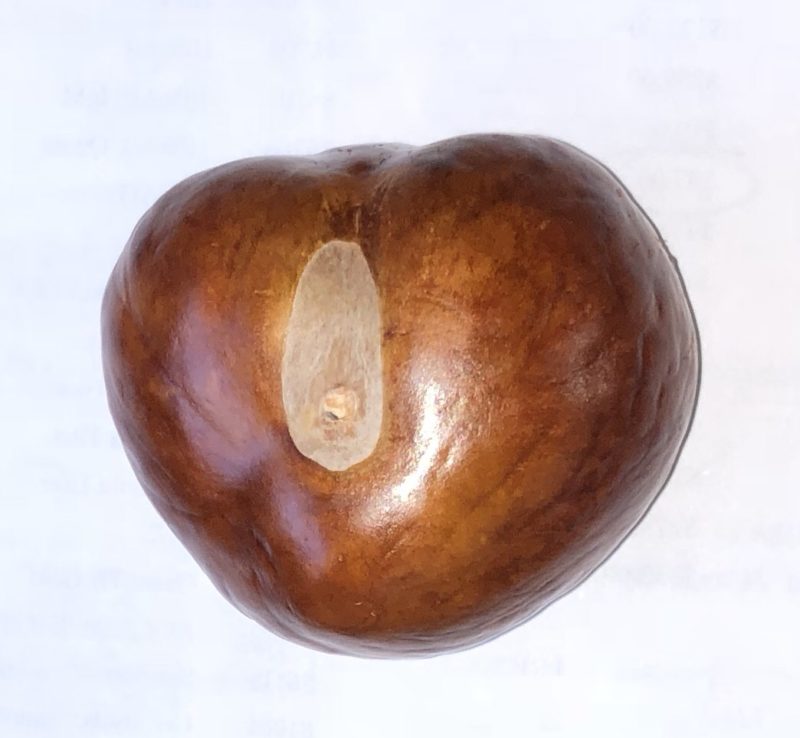
In winter, the smooth silvery bark and lovely form of the tree make it a point of interest while older trees display bark that is checked and full of character. [Photo:18] The trees generally top out at about 15 feet in height but continue to spread their canopies over their lifetime. Their beauty makes them a focal point in many gardens.
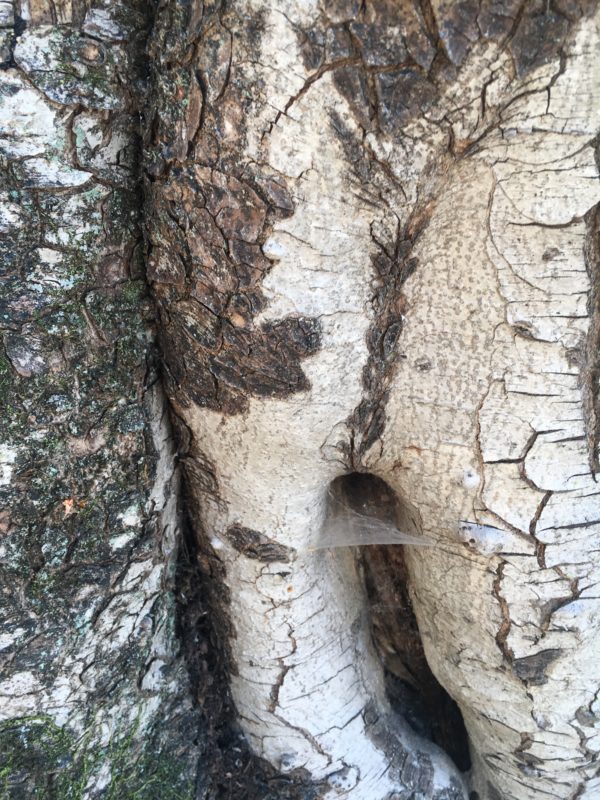
Ecology and Use by Native Americans
All parts of the tree are toxic to many animals, including human beings. They contain glycoside compounds which destroy red blood cells and depress the central nervous system. Native Americans were able to eat the buckeye seeds which are rich in carbohydrates by first leaching out the poison. They also used the toxin to stun fish by throwing the seed husks into pools in creeks creating a foaming soap, making it easier to catch the fish. Buckeyes contain saponins, which are compounds that create soapy-like substances—hence the family name, Soapberry. [Photo: 19]. These saponins are the tree’s defense against insects and other organisms.
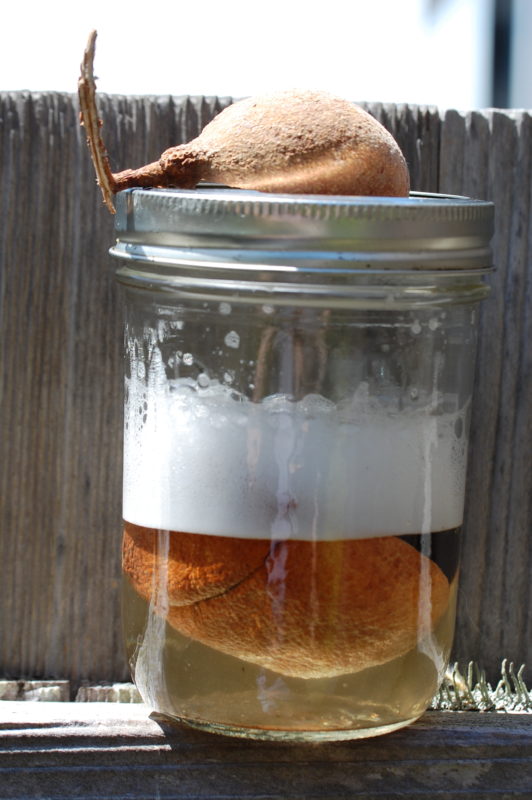
While the nectar and pollen are toxic to European honeybees and can cause death and deformities in them, the buckeye is one of the larval host plants for the native Spring Azure or Echo Blue butterfly (Celastrina echo), and its nectar is a source of food for many native bees and other butterflies. It’s speculated that the native insects’ long exposure to the buckeye toxins have helped them evolve adaptations to minimize their effects, unlike the more recently arrived European honeybee. California ground squirrels have been reported to eat the seeds, and black-tailed deer browse the leaves. Of particular note is the fact that buckeyes, unlike many hardwood species, do not support a rich mycorrhizal community, and thus few mushrooms are associated with them.
California buckeyes are not important as timber trees since they are one of the softest and lightest hardwoods native to the U.S. The wood is easy to work but isn’t strong and is subject to rot. Burl wood, which is used for turned objects, is more valuable.
Range and Occurrence
As its name suggests, the California buckeye is endemic to California, meaning that it is native only in California. It’s found primarily in the Klamath, Coast, Cascade and Sierra Nevada ranges where it can occur as a dominant tree species or in combination with other trees, especially oaks.
In the Gualala River watershed, it occurs in both the Gualala River Forest in the northwestern portion of the watershed and in the Buckeye Forest to the south and east. Recently, botanists mapping areas of the Buckeye Forest discovered an unusual occurrence of a grove of buckeyes. Usually, buckeyes are scattered across the landscape, but in this case, there were buckeyes growing together with some unusual associations of different species of oaks. Botanists map vegetation that occurs in patterns, and these patterns are then described and classified as alliances. Their relative rarity is ranked in terms of how common or rare they are in the state and globally and how threatened. This woodland alliance of buckeyes is considered rare and threatened and is therefore subject to legal protection.
Buckeyes are occasional in the western part of the watershed and can be found along the river on Annapolis and Skaggs Springs Roads. There are several near Clark’s Crossing uphill on Annapolis Road.
Selected Sources
Sequin, Margareta. 2012. The Chemistry of Plants: Perfumes, Pigments, and Poisons
Siegel, Noah and Christian Schwarz. 2016. Mushrooms of the Redwood Coast.
The Conservation Fund. 2017. Buckeye Forest Integrated Resource Management Plan
US Forest Service, Fire Effects Information System, Index of Species Information (https://www.fs.fed.us/database/feis/plants/tree/aescal/all.html
All photos by Laura Baker except Photo #17
Attribution for Photo #17: By Wilmot [CC BY-SA 4.0] from Wikimedia
 Friends of Gualala River Protecting the Gualala River watershed and the species living within it
Friends of Gualala River Protecting the Gualala River watershed and the species living within it

